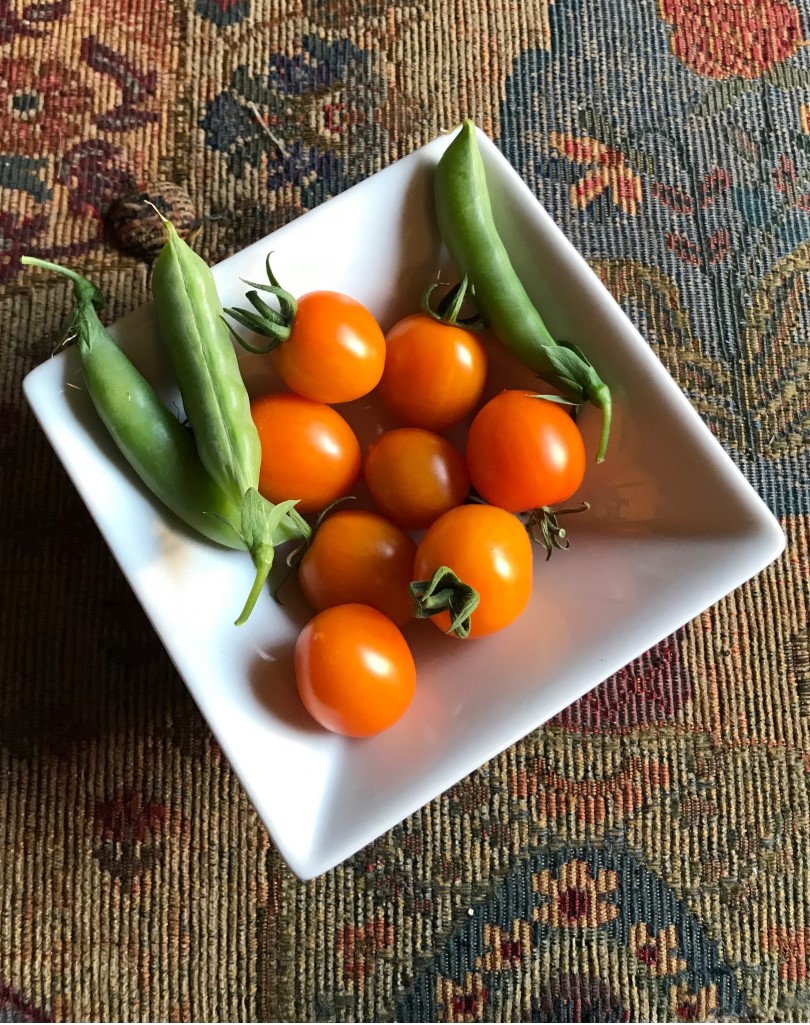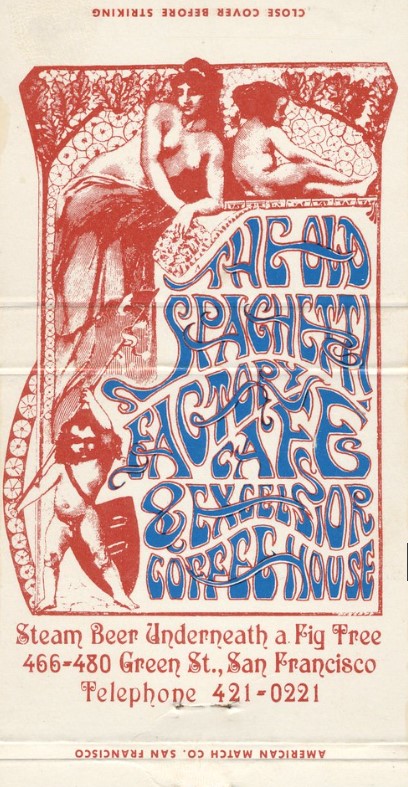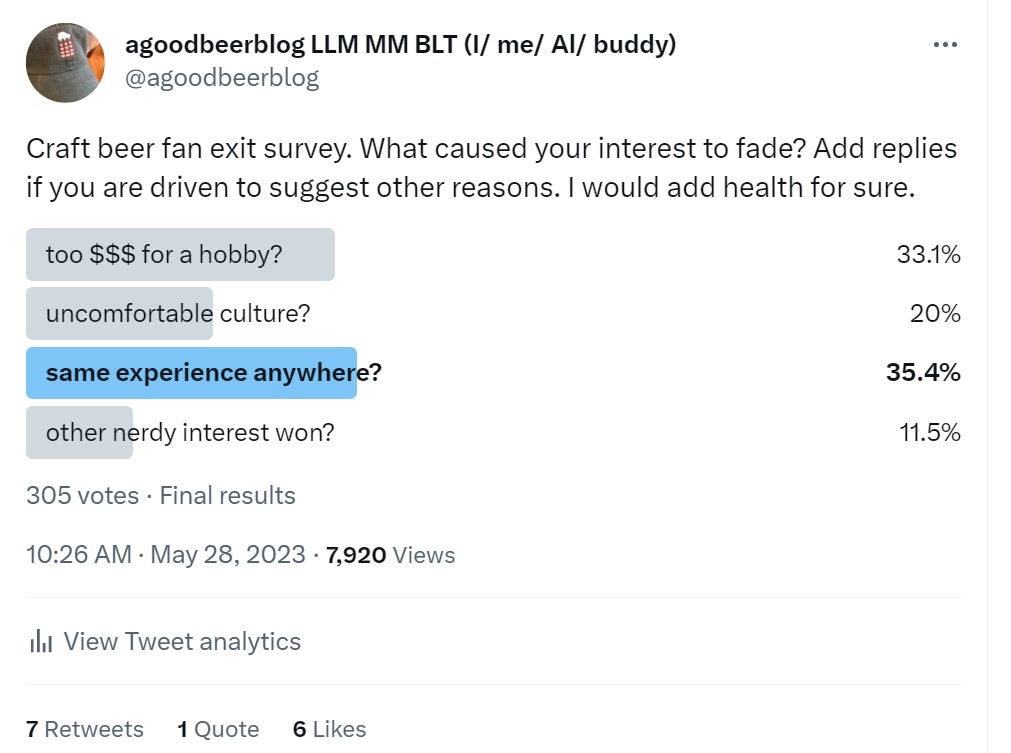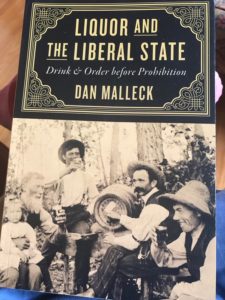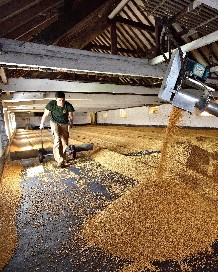 Mid-August. What to do? What to do? Soon I should have that annual dream about having to go back to school, never finding my courses, finding it all too late to catch up and… why am I even here anyways… seeing as I have more fingers on one hand than I have years to retirement. It’s coming. Thoughts of autumn come in shades of brown, whether new corduroys or old leaves. Like these lovely images from Warminster Maltings, a clickable one of which is nipped and tucked to the right. But I rush ahead. Too far ahead. Plenty of green days still to come, right? Right? Better be. I have plans. Plans a plenty for the next couple of weeks away from the coal mine. Well, the office. The home office, half the time. But my shoes are generally black so you get the idea.
Mid-August. What to do? What to do? Soon I should have that annual dream about having to go back to school, never finding my courses, finding it all too late to catch up and… why am I even here anyways… seeing as I have more fingers on one hand than I have years to retirement. It’s coming. Thoughts of autumn come in shades of brown, whether new corduroys or old leaves. Like these lovely images from Warminster Maltings, a clickable one of which is nipped and tucked to the right. But I rush ahead. Too far ahead. Plenty of green days still to come, right? Right? Better be. I have plans. Plans a plenty for the next couple of weeks away from the coal mine. Well, the office. The home office, half the time. But my shoes are generally black so you get the idea.
First – and as much as for equal time requirements as anything – one very interesting bit of the old vid I came across this week is a wonderful PR piece for a maker in the old coopering trade:
The special delivery of a 9000L wine foudre by Taransaud at Château de la Chaize near Brouilly. Very proud of our coopers! (sound on).
Sound on indeed for quite a display of how staves and hoops come together to hold over 11,000 sleeping bottles worth of the old Chat de Chaz, one of which sits nearby, sleeping with others in the cold and dark, waiting for my own Christmas dinner in a few years.
Neither sleeping or in the dark is Mudgie who has some shareable thoughts on why of all the pubs that are lost the Crooked Pub, apparently of little interest when opened other than for being off plumb, is now a national cause:
Over the past forty years, the pub trade as a whole has been in a long-term decline that has led to tens of thousands closing down. The reasons for this are down to a variety of changes in social trends and attitudes, although certain government actions such as the Beer Orders and the smoking ban have exacerbated matters. There is undoubtedly a profound sense of loss about this, even from people who never used pubs much… At times this can turn into a kind of vaguely-directed anger, as we are seeing here, and people are keen to look for scapegoats such as pubcos, developers, supermarkets and government. But the reality is that pubs have mainly been undone by social change, not by some malign conspiracy, and there is no remotely credible alternative course of action that would have made it permanently 1978.
And Stan had some good thoughts on the benefits of not chasing the tail that craft’s been diving after for all these years now:
I am left considering what it means for a brewer to be creative, or what it takes for a beer to be considered new, even novel. New Image Brewing, located in an adjoining town, currently has a terrific helles called Do Less on tap and in cans. It is brewed with malts from Troubador Malting here in Colorado, and thus probably tastes more familiar to me than to you. The malt flavor in Do Less is different than the malt flavor in Bierstadt Lagerhaus Helles, brewed less than 10 miles from New Image. Bierstadt Helles, to me, is pretty much a perfect beer. I’m not going to quit drinking it because I’ve found something new (and practically speaking, Do Less is probably a one-off). But new, interesting and good, to me, that is creative. It would be greedy to ask for more.
Indeed. And greed may get one more – or less – than one counted on. Which is why context – the big picture and the long view – is so important. And Andreas Krennmair has added to that total sum by publishing his new book, Bavarian Brewing in the 19th Century: A Reference Guide. He advises that it is available on Amazon worldwide, both as paperback and Kindle e-book and gives the friendly caveat:
Please note that this is properly nerdy beer stuff….
Which is a healthy approach to such things. One can embrace the lighter topic – the hobby interest – too firmly and squeeze much of the joy out if it. Turn it into a belief. Fortunately for a scribbler, the downsides of things can be as interesting as the up and gives opportunity for humanity to expose its gentle foibles. We have as the current example this summer’s continuing flow of opinion about craft’s collapse yea or nay as with this article “Is the craft beer tide turning?“:
“Distributors and retailers have been reducing their focus on distributed craft and searching for growth in other pockets, but there are signs that the worst reductions may be in the past”, the association said. Overall, craft brewers “continue to face economic headwinds on both business and consumer fronts”, it said. From a business perspective, borrowing costs continue to rise, and while input cost increases have stabilised, they remain elevated over previous levels. Meanwhile, mounting evidence shows inflation eroding consumers’ buying capacity.”
Not to mention mega-brewers selling off craft assets.* The news has reached as far as India. Heck, even those boosters for booze at GBH have been having their swings at poor old craft:
“To me, that experience of drinking in your garage with your friends is universal whereas Braxton maybe isn’t,” Sauer says. “When a craft brewery is presenting to a retailer, [the buyer] asks, ‘Can this brand travel?’ I wanted to remove some of those assumptions.” He also hopes Garage Beer can shake off some of the flavor expectations with which drinkers associate the term “craft beer.” Research Sauer conducted in partnership with the marketing department at Miami University in Ohio found that the top characteristics respondents linked to craft beer were “hoppy” and “heavy.”
“Heavy” – oooof! Is that the new curse word? The Beer Nut shared his thoughts on craft meets US macro:
I can safely say it’s true to type for this inexplicably craft-credentialed American industrial style, being dry, crisp and very dull. There’s a tiny hint of fruity lemon fun hovering in the background, but otherwise it’s a straight-up fizzy lager of the nondescript sort. I couldn’t leave things there.
Endtimsey. But, you know, for many of those who have invested deeply in the fading trade on way or another there is still talk of turn around. Could be. As with maybe fringy party politics perhaps, there is that sort of normal human desire for plucky redeption when the hero is cornered, the hope against hope that fuels the observations of alien sci-fi characters like Spock or Doctor Who. Which is what makes reading about the beer trade and beer culture so perhaps unhealthily yet tantilizingly compelling. Especially when it isn’t as firmly footed in fact as I fully expect Krennmair is in his new book.
Note: CB&B has published a handy newbie guide to all mash home brewing – a clear sign of a downturn as ever I saw:
Mashing grain is what makes beer beer. Yes, hops, yeast, and water certainly play important roles, but it is only through the mash, whether performed in your house or in the process of manufacturing malt extract, that the soul of beer is liberated from its starchy origins. Mashing grain is to beer as crushing grapes is to wine, as pressing apples is to cider, and as collecting honey is to mead.
Also note: twenty years ago this very week, I invented the “Molrona” during the 2003 black out. You. Are. Welcome.
Martin noted a sad ending with a photo essay from his recent visit to Corto, Katie and Tom Mather’s establishment, which I never saw myself but supported as I could:
It’s incredibly cosy, and welcoming, and tiny. One spare table upstairs, where the cheery chap brought our Wishbone and Thornbridge… Sorry it was a flying visit, Corto folk, you were lovely. Best wishes for whatever you do next.
Say hello to Tom Grogan, 92, now in his eigthth decade in the pub trade:
Mr Grogan, who is believed to be the UK’s oldest landlord, said he was not that keen on alcohol himself. He said despite pouring thousands of pints, he drank “very little” and had been only drunk “half a dozen times”. His career began 71 years ago, when started helping out in a pub in Rusholme after arriving in England. Seven years later, he got the chance to become a landlord, but said it meant he and his girlfriend had to make a quick decision.
You’ll have to read on to figure out what that decision was… unless you guess… because it’s not much of a guess…
Ron’s Remebrances take us this week back to Scotland in the mid-1970s when a radical change in licensing laws were brought in:
I was dead jealous when my school friend Henry, who studied in Aberdeen, told me of pubs not only staying open all afternoon, but until 1 AM. All totally legal. And totally due to the interpretation of a new Licensing Act for Scotland. Which, I’m pretty sure, wasn’t intended to liberalise opening hours to the extent that it did… I can remember visiting Edinburgh in the late 1970s and wondering at the continental-style opening hours. And wondering why the same liberal treatment couldn’t have been given to the rules in England.
GBH has run an interesting if ripe study of Coopers Sparkling Ale this week:
It can be tempting to dismiss Sparkling Ale as an early offshoot of Pale Ale, without any notable idiosyncrasies to help define the liminal space separating the two. Most contemporary stylistic guidelines highlight a focus on Australian ingredients, but beyond this and some more proscribed production techniques, the difference is minimal. Though delineation between styles has never been an immutable barrier, for those of us who grew up on it, Sparkling Ale has a highly distinctive character.
I had no idea that there were service disruptions in out next province to the left, Manitoba… keeping in mind as my excuse that the border is almost 2000 km and a timezone away. Seems like the government store is on strike with unequal consequences:
When Shrugging Doctor, a local winery and vineyard, said in July it would expand and move operations, its owners had no idea it was about to head into a devastating strike-induced limbo thanks to a labour dispute at the Crown-owned liquor corporation. While Manitoba beer producers have the option of distributing their own products — by hiring delivery companies to drop off merchandise to private vendors, bars and other sellers — by law, wine and spirit manufacturers aren’t allowed to do the same, said Shrugging Doctor co-owner Willows Christopher, who founded the business in 2017.
Matt is doing a good job keeping an eye on Mikkeller’s deek around the ethical implications of claims made against it:
I see Mikkeller are pouring at another U.K. festival this weekend, which is honestly absolutely wild to me. I feel like there was a real opportunity to create real, progressive change in U.K. beer a couple of years ago. But this is being moved on from in favour of the ££££.
No doubt part of their long term plan which seems to have been successfully pulled off if this admission from late July is understood. Easy to enough to foresee back in February 2022.
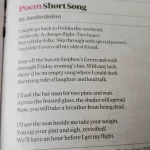 A poem by Justin Quinn was noted by the ever lyrical M.Noix this week that is worth saving and sharing… and thereby trodding all over intellectual property rights but for this bit of review… lovely… I have dreams also like that… and it even rhymes here and there. Solid second stanza letter “u”use.
A poem by Justin Quinn was noted by the ever lyrical M.Noix this week that is worth saving and sharing… and thereby trodding all over intellectual property rights but for this bit of review… lovely… I have dreams also like that… and it even rhymes here and there. Solid second stanza letter “u”use.
Four weeks ago, I forwarded the news that Russia had moved to grab Carlsberg’s assets, you know, those assets that really should have been shut down when the invasion of Ukraine began but, you know, money. Well, now the brewery has spoken out:
The chief executive of brewing giant Carlsberg has said he was “shocked” when Russian President Vladimir Putin seized its business there. Cees ’t Hart said the company had agreed a deal to sell its Russian operations in late June, but just weeks later a presidential decree transferred the business to the Russian Federal Agency for State Property Management. “In June, we were pleased to announce the sale of the Russian business. However, shortly afterwards, we were shocked that a presidential decree had temporarily transferred management of the business to a Russian federal agency,” he said.
Well, lookie lookie. Why buy when you can take? Beware with whom you think you are doing business with, I suppose.
Note: the ever increasing subdivisions of beer expertise never ceases to amaze.
And finally what week would be a proper week without a story like this:
A “plague” of racoons have stormed a number of houses across Germany to steal beer and kill family pets. Households have been billed up to €10,000 after returning home from their holidays to discover their kitchens destroyed. According to Germany’s National Hunting Association (DJV), a total of 200,000 raccoons were killed last year in a bid to control the population.
Furry bastards! And – that is it for another week. Not a record breaker for length this week and, frankly, a few familiar sites may have been mailing it in from the beach. Plus all those awards! Which claim to pick global champions …while also reminding you that judging is nothing more than what a few folk thought on the day. Ah, August! And as per ever and always, you can check out the many ways to find good reading about beer and similar stuff via social media and other forms of comms to connect – even including at my new cool Threads presence @agoodbeerblog. Have you checked out Threads as Twitter ex’s itself? (Ex-it? Exeter? No that makes no sense…) They appear to achieved to make social media offer less and less. Brilliant… but I never got IG either. I still prefer the voices on Mastodon, any newer ones noted in bold:
Alan McLeod | A Good Beer Blog (… me…)
Stan Hieronymus | The Man!
Boak & Bailey | The B² experience
Curmudgeon Ale Works | Jonathon is Brewing
Katie Mather | Shiny Biscuit and Corto
David Jesudason | “Desi Pubs” (2023) author
BeoirFest | They say “Let’s Talk Beer”
Ron Pattinson | The RonAlongAThon Himself
Al Reece AKA Velky Al | Fuggled
Jennifer Jordan | US hops historian
Andreas Krennmair | Vienna beer and lager historian
Beer Ladies Podcast | Lisa Grimm and colleagues
The Bar Towel | Toronto’s chat zone for beer lovers
Chicago Beer Society | Folk in Chicago getting social over beer
Jay Brooks | Brookston Beer Bulletin
Joe Stange | Belgian beer expert, beer magazine editor
Cider Bar | Barry makes Kertelreiter cider
Laura Hadland | CAMRA historian and beer writer
Brian Alberts | US beer historian
Jon Abernathy | The Beer Site
Maureen Ogle | US Beer Historian
Lars Garshol | Norwegian Beer Historian and Kveik Hunter
James Beeson | Beeson on Beer
Carla Jean | MAINER!!!
Thandi Guilherme | Beer Ladies Podcast Co-host
Lisa Grimm | Beer Ladies Podcast Co-host
Roy of Quare Swally | Beery ramblings from Northern Ireland
Rob Talksbeer | Podcaster and Youtuber
Anthony Gladman | UK Drinks Writer
Jeff Alworth | Manna Of Beervana
Northwest Beer Guide | Fairly self explanatory… but not NW Latvia…
Evan Rail | Prague based GBH editor, freelance writer, NYT etc.
Todd Alström | 50% of the Alströms
Jacob Berg | Beer talking librarian
Anyone else? And, yes, we also check the blogs, podcasts and newsletters to stay on top of things – including more weekly recommendations from Boak and Bailey every Saturday and Stan at his spot on those Mondays! Get your emailed issue of Episodes of my Pub Life by David Jesudason on many Fridays. And Phil Mellows is at the BritishBeerBreaks. Once a month, Will Hawkes issues his London Beer City newsletter and do sign up for Katie’s now much more occassional but always wonderful newsletter, The Gulp, too. Ben’s Beer and Badword is back! And check out the Atlantic Canada Beer Blog‘s weekly roundup. There is new reading at The Glass. Any more? Yes! Check to see the highly recommended Beer Ladies Podcast. And the long standing Beervana podcast . There is the Boys Are From Märzen podcast too and check out the travel vids at Ontario’s own A Quick Beer. There is more from DaftAboutCraft‘s podcast, too. All About Beer has introduced a podcast. There’s also The Perfect Pour. Plus follow the venerable Full Pint podcast. And the Craft Beer Channel on Youtube soon celebrating a decade of vids. And remember BeerEdge, too, and The Moon Under Water… if you have $10 a month for this sort of thing… I don’t. Pete Brown’s costs a fifth of that. There was also the Beer O’clock Show but that was gone after a ten year run but returned renewed and here is the link!
*Revisiting a thought, we discussed two weeks ago how that portion of Ontario’s smaller brewers who are members of the trade association OCB have launched a new lobbying effort that has a bit of an odd goal: “Keep Craft Beer Local.” I say “odd” as the argument that seems to be being made is taxes are too hight therefore small brewers will have to sell out to… dum dum duuuuuummmm… strange folk from away. As previously noted: “If no changes are made to the tax structure, he and the Ontario Craft Brewers Association, say they fear more and more of Ontario’s craft breweries will be bought up and merged with foreign buyers. The association says it represents over 100 breweries.” This is an odd argument, as I say, seeing as international mega brewers are divesting themselves of their craft assets. I wonder if this is just an example of bad timing, the power points keeping up with the news. Perhaps Ben can help explain.

